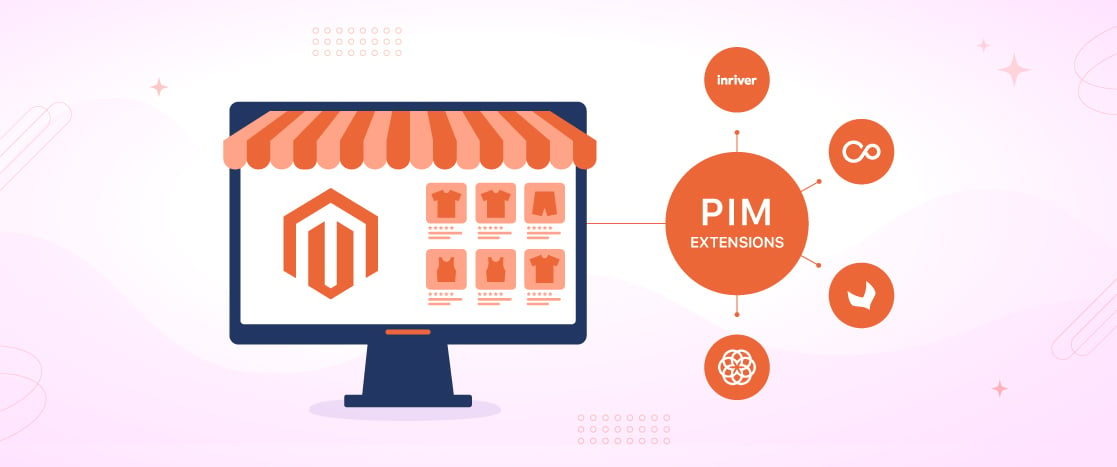Starting an ecommerce store is exciting, but determining the costs can be challenging. Magento is one of the most powerful and customizable ecommerce platforms available nowadays and can be considered a perfect choice for various retailers.
However, setting up an online store requires many things, which may cost different sets of criteria for necessary and additional features. This guide is for those who want to estimate their Magento pricing before starting. In this guide, we will break down the critical components of Magento pricing so you can budget appropriately and set realistic expectations.
We will look at all the cost factors, such as licenses, domain and hosting, themes and extensions, design and development, maintenance and support, and security. Pricing can vary based on the size and complexity of your store.
We will provide price ranges for each cost component so you can estimate the costs for your Magento store. Ultimately, you can launch your ecommerce store that meets your business needs and budget.
So, let’s explore the estimated Magento pricing for your store.
Magento Pricing – Types of Development Costs
Determining the total cost for a Magento ecommerce store with various components that affect pricing can be challenging. You will need to decide each feature required in your Magento store setup, calculate the total expenses, and set a budget based on your needs.
To make things easy for you, here is a list briefly describing the types of costs you need to work on:
- Customization: You can always start with standard Magento features; most of which are free. However, you might have to fund design and development costs if you need out-of-the-box features while customizing the store.
- Integrations: The store may be required to integrate some external tools for payments, shipping, PIM, CRM, and more that can vary in cost based on the requirements.
- Domain and Hosting: A domain is the most essential factor for running an online store and hosting for making it live over the internet. Both domain and hosting costs depend on the provider’s pricing plans and the hosting you buy. Using Managed Magento Hosting to deploy a secure and smooth ecommerce website is recommended.
- Extensions: Using extensions and add-ons to add extra features to your store will cost you more based on the required plugins.
- High-Traffic: Higher site traffic will require more robust hosting plans and scale, increasing operational costs. Bandwidth is one of the costs that may increase with the number of visitors to your website.
- Security: Ecommerce websites cannot start operating without an SSL certificate. You might need additional security services for your Magento store.
Examine your store’s requirements and estimate the total cost, make a plan, and set your budget.
Estimated Magento Pricing Breakdown for Development
As a new business owner, you really need to be careful when it comes to budgeting your development. You might not spend on something your users might not use. Therefore, it’s always nice to create a list of “must have” and “nice to have” features. The following paragraphs mainly focus on “must haves”.
Magento Edition Costs
There are two primary editions of Magento available in the market:
- Free Edition: Magento Open Source
- Paid Edition: Adobe Commerce (erstwhile Magento Commerce)
Choosing the right edition for your ecommerce store is mandatory, and it is an essential part of Magento pricing considerations.
Magento Open Source (aka ‘Magento) is a free-to-use software with all the key functionalities of running an online store; however, building an ecommerce store with Magento will cost other resources. These expenditures, like domain, hosting, and development, are discussed in the coming paragraphs, but the actual software cost for a Magento store is essentially $0.
The same can’t be said for Adobe Commerce (once known as Magento Commerce).
Adobe Commerce is the enterprise-level edition with advanced features and dedicated Adobe support. The On-Premises licenses start at $22,000 per year. The cloud-based Commerce Cloud option starts at $40,000 annually. Commerce implementations often range from $50,000 to over $100,000 with required development, design, and launch services.
Choose the edition based on your business needs and the functionalities it requires. Commerce delivers faster time-to-value with robust features and support; however, it is known for not being as customizable as Magento.
The difference between the two versions lie in the support you get. Unless you are not a multi-million retailer, you do not the “robustness” of Adobe Commerce. To an extent, Magento is good enough and it is pretty good at running a store of any size, from your indie fashion pop-up to multi-brand marketplaces.
Domain and Hosting Cost
Choosing the right domain name and hosting solution are key decisions that affect ongoing costs when launching a Magento store.
A new branded domain typically costs $10 to $15 annually, and an expired/pre-owned domain costs $20 to $500 based on attributes like DA and DR. Select a domain that best aligns with your brand identity.
If you want to buy Magento hosting from a specialized provider, it costs approximately $40/month for entry-level cloud hosting optimized for Magento’s resource requirements. You might be tempted to host your ecommerce site on shared hosting, but that is a recipe for disaster for any Magento store.
As sales grow, you will need to upgrade your hosting plan or scale data volume, which will cost some additional fees.
If you are using Magento Commerce Cloud edition, you will not need to pay for these expenses as it comes with hosting and support. But if you are using open source or commerce edition, you must buy domain and hosting separately. Adding these expenses to your budget is necessary.
SSL Certificate Cost
Using an SSL certificate to operate a secure Magento store is highly recommended. Investing in an SSL certificate is one of the most important factors to consider as it encrypts customer’s sensitive data transmitted online. SSL certificate cost depends on the encryption strength, validity period, and the provider. Most hosting provide an SSL certificate for free, and some add charges based on their plans.
Magento Commerce Cloud includes a standard SSL certificate with hosting. But for on-premise Open Source and Commerce editions, an SSL certificate is an additional expense.
Devrims provides an SSL certificate for free as it provides cloud-based services, but if you are using another provider that does not provide this service, you will need to pay for it. Basic single-domain SSL certificates start around $50/year, and Extended Validation certificates provide a maximum encryption range from $150 to $300 annually.
Design and Development Cost
The design and development process is the primary step for launching a Magento store. Designing and developing a custom Magento store is a significant investment that delivers an optimized user experience aligned with your brand.
Many free Magento themes are available to design your store with basic features. At the same time, premium themes are also available for additional features that cost from $180 to $500. However, if you want advanced design, you can go for custom theme development, requiring a developer. On average, the rate a developer asks is around $50 per hour, which means a custom theme cost will depend on the development hours.
Key fronts like the homepage, product pages, and checkout flow for development require design modifications and customization beyond basic themes. Core customizations cost around $2,000 minimum, with an average of 40 development hours needed at $50 per hour.
Additional features, integrations, and custom functionality will increase development costs further. Unique designs, personalized features, and smooth user flows don’t come cheap.
Plan for extended design and development timelines and significant budgets to create a high-converting Magento experience that stands out in your niche. Distinct branding and seamless shopping journeys convert browsers into loyal customers.
Extensions and Add-Ons Cost
One of Magento’s strengths and major services is its huge marketplace of extensions and add-ons that provide additional functionality beyond the core software. Some of these extensions are available for free or lite versions with basic features, and many are paid.
The paid extensions come at varying costs typically from $50 to $500 depending on the extension’s features. Highly advanced extensions with extensive customization features can cost up to $2,000. Examine the extensions you will use in your Magento store and add them to your total Magento costs.
Check out some cool AI extensions for Magento here.
Maintenance and Support Cost
Running a Magento store requires ongoing maintenance and support for optimal uptime and performance. Plan to budget $5,000-$10,000 annually for basic maintenance needs.
Typical maintenance activities like applying security patches, bug fixes, version upgrades, and performance tuning cost $80-$125/hour from Magento developers. Around 5 hours monthly is standard for average stores.
Additional costs come from unplanned troubleshooting and emergency maintenance of severe issues. Server monitoring tools starting at $20/month can fulfill support needs.
Magento Pricing – Conclusion
Calculating the total estimated cost to build, launch, and run a Magento ecommerce store depends on several factors. There is no fixed price because factors can differ for different business types and their needs. Magento pricing fluctuates based on editions, customizations, extensions, traffic levels, and required support.
The store owners can set an estimated budget by examining the key elements they will use. They can search for each element’s price, if they cannot afford it they can search for some free and low-cost alternatives. They can control costs through intelligent decisions and balanced feature prioritization. Choose wisely and set an estimated budget to make your store smooth and secure.






